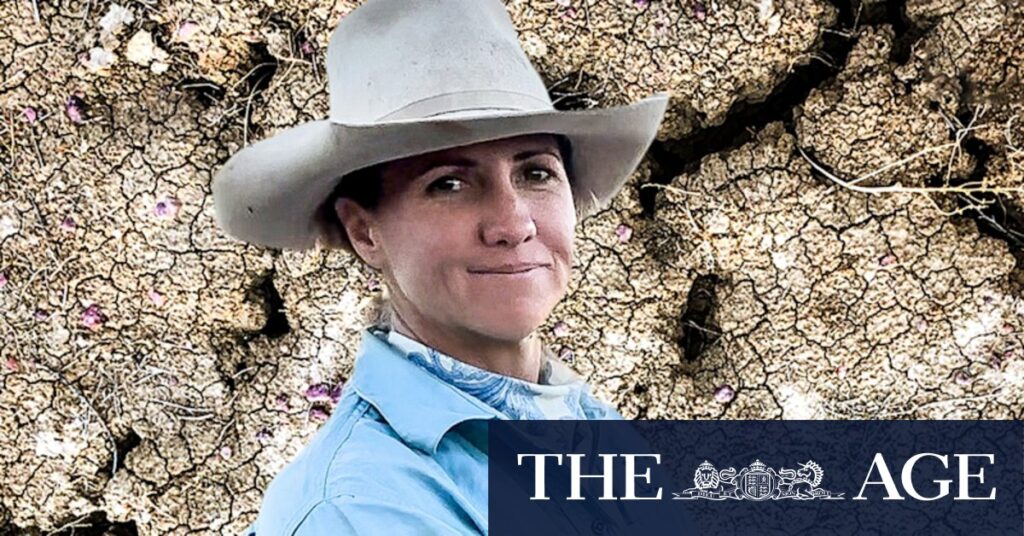
When Jody Brown finished high school in 2001 and began working full-time on her family’s station near Longreach, western Queensland was already gripped by a drought that would persist for over two decades. This relentless dry spell, with only brief interruptions, transformed Brown into a student of regenerative agriculture and a vocal advocate for Farmers for Climate Action. Her fears for Australia’s future in a warming world have only intensified.
Brown’s stories of the drought years paint a picture of a drawn-out ordeal. Her family’s 45,000 hectares at Latrobe Station, with its savannah and Mitchell grass plains, suffered under increasingly frequent superheated days. “It’s a slog. It’s a slow burn. You never know when it’s going to end,” she reflects. Yet, it was the moments of stark reality, like kangaroos abandoning their joeys to survive, that left lasting impressions.
The Climate Crisis Intensifies
In 2019, as Brown drove to a conference in Byron Bay, she listened to reports of half of New South Wales ablaze, while drought continued to ravage southern Queensland. Meanwhile, a catastrophic flood in the north claimed 600,000 head of cattle. The stark contrasts in weather events underscored the climate chaos.
At a recent Farmers for Climate Action conference in Canberra, Brown spoke of her concerns about the increasingly frequent brutally hot days that threaten the grasses she has painstakingly restored. Professor Mark Howden, director of the Institute for Climate, Energy and Disaster Solutions at the Australian National University, echoed her fears. He revealed that the world had breached a 1.5-degree warming threshold for the first time last year, a consequence of failing to curb carbon emissions since the Paris Agreement.
“We have to go cold turkey,” Howden told the audience, emphasizing the urgency of action.
Scientific Evidence and Policy Challenges
Howden painted a grim picture of the future, linking increased greenhouse gases to rising global temperatures and more extreme weather events. A graph from the Copernicus Climate Group illustrated how the number of days exceeding average temperatures has surged over the past decades. “Those extremes are changing incredibly quickly, and they hit agriculture hard,” he warned.
As temperatures soar, rainfall patterns shift, often resulting in destructive torrents rather than beneficial fronts. Howden’s message was clear: the science and policy are intertwined, yet the pace of policy implementation lags dangerously behind.
Political Implications and Delays
Australia’s Climate Change and Energy Minister Chris Bowen addressed the conference, acknowledging the delay in releasing the National Climate Risk Assessment. The postponement has fueled concerns about the complexities of domestic and international climate politics. Australia’s credibility at upcoming UN COP climate talks hinges on delivering its 2035 emission reduction target, with estimates suggesting a 65 to 75 percent reduction is feasible.
Former Fire and Rescue NSW commissioner Greg Mullins, now a climate action advocate, has seen glimpses of the risk assessment. He describes its contents as “horrifying,” particularly the scenarios of emergency service responses becoming unsustainable at two degrees of warming.
“It’s a horror show,” Mullins says, citing potential coastal inundation and prolonged droughts as major threats.
Urgency for Action
Bowen has denied political motives behind the report’s delay, but acknowledges its grim outlook. “It’s a factual, scientific assessment,” he stated, highlighting the significant costs of inaction.
As Brown returns to western Queensland, she watches the unfolding political landscape with hope for ambitious emissions targets. “To be honest, I want to see a target of at least 85 percent,” she asserts, emphasizing the need for decisive action to protect agriculture and nature.
The climate crisis is a pressing issue that demands immediate and substantial action. As stakeholders gather for the UN General Assembly, the world watches to see if Australia will rise to the challenge.







